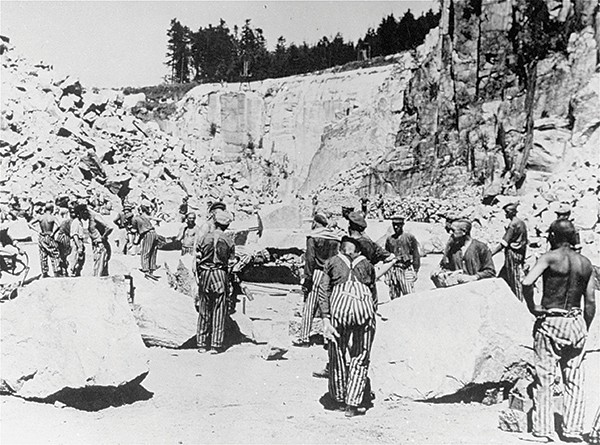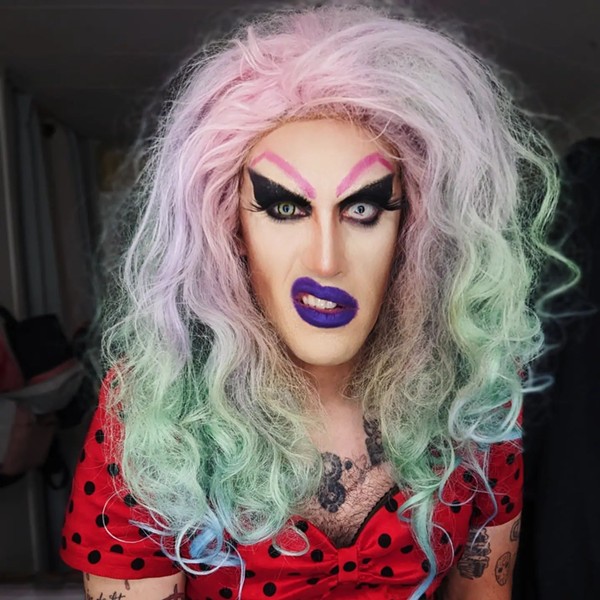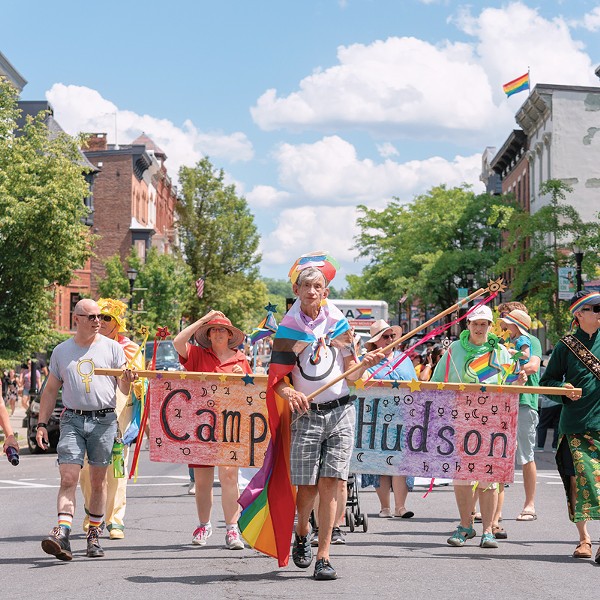Fascists hate gays and lesbians. Why? They don't reproduce, creating no Hitler Youth. The men make poor stormtroopers. Nazis believed that gays threatened the "disciplined masculinity" of the German race, and could become an "epidemic." Under Hitler, between 5,000 and 15,000 gay men were sent to concentration camps, where many perished from starvation, disease, and systematic murder. The official phrase was "extermination through work." "Nazi Persecution of Homosexuals, 1933-1945," a traveling exhibition of the United States Holocaust Memorial Museum, will open at the Hudson Valley LGBTQ Center in Kingston on June 20.
The Nazis were very literal about the "master race." They approached the German people as if they were a kennel full of Dalmatians. If they removed gypsies, Jews, gays, the mentally ill, and other "defectives," the Aryans would eventually become perfect.
Hitler was appointed Chancellor in January, 1933. In February, he began closing gay bars. A year later, a regulation authorized police surveillance of "habitual sex offenders." On the Night of the Long Knives (beginning June 30, 1934) at least 85 Nazis whom Hitler saw as threats were killed. Some were accused of "moral turpitude" (homosexuality). In 1935, the Nazis revised Paragraph 175, the German anti-gay law. By 1938, courts ruled that any sexual contact between men, even "simple touching" or "simple looking" could be grounds for arrest. Eventually about 100,000 men were rounded up for such crimes. In July 1940 "all homosexuals who have seduced more than one partner" were ordered to concentration camps.
As Jews were forced to wear yellow stars, gay men in camps wore pink triangles (later adopted as a political protest by American activists in the 1980s). Some were castrated by order of the camp commandant. Amazingly, when the Allies liberated Germany, they did not revoke Paragraph 175. Some gay men from concentration camps were sent to prison to serve out their sentences. Remember, homosexuality was also a crime in the "free" United States.
But were those targeted actually gay? No one can know. "Sexual deviance" can't be measured scientifically. All that fascists can do is legislate behavior —make it dangerous for men to weep or to touch another man's shoulder. The Nazis successfully criminalized tenderness.
No one is safe when gays are persecuted. A man must always worry: "Am I too effeminate?" A woman must fear: "Do I look like a dyke?"
Hitler, it is now believed, had a same-sex liaison during World War I. A fellow soldier later wrote: "At night, Hitler lay with Schmidl, his male whore." Was the Fuhrer's homophobia a fear of his own impulses? "We know this as a phenomenon—that sometimes what we fear most in ourselves, we attack outside," observes Vanessa Shelmandine, project director of the LGBTQ Center.
The Holocaust Memorial Museum sought out the Hudson Valley LGBTQ Center, which amounts to a recognition, by the federal government, of the value of such community groups. The exhibition, which includes individual stories of gays in the Third Reich, will be self-guided, but docents will also be available for visitors. The Old Dutch Church in Kingston will host films, discussions and book groups in connection with this exhibit. For more details, see the LGBTQ Center website.
"The positive message in all this is that there have always been people who think that everyone's freedom is worth fighting for, and we'll see many of those allies coming into the center this summer for this exhibit," says Shelmandine.
"Nazi Persecution of Homosexuals, 1933-1945" will appear at the Hudson Valley LGBTQ Center in Kingston from June 20 to August 14.

















